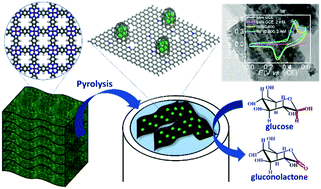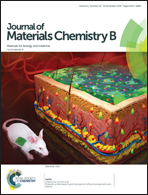Self-supported Ni nanoparticles embedded on nitrogen-doped carbon derived from nickel polyphthalocyanine for high-performance non-enzymatic glucose detection†
Abstract
High-precision, non-enzymatic electrochemical detection of glucose is of vital importance for the diagnosis and treatment of diabetes mellitus. To meet this requirement, a facile and effective strategy for creating glucose-sensitive detective materials with high sensitivity and selectivity is demonstrated via the synthesis of Ni nanoparticles self-supported on N-doped carbon (Ni/NC) by direct pyrolysis of cross-linked nickel polyphthalocyanine (NiPPc) for non-enzymatic glucose detection. Owing to the extended electronic structure of the N-doped carbon supports and the considerable improvement in charge/mass transport, the resultant Ni/NC sample exhibits excellent activity and long-term reusability in non-enzymatic glucose detection, with a sensitivity of 660.3 μA mM−1 cm−2 and a rather low detection limit of 0.12 μM, along with a wide linear range of 2 μM to 4.658 mM. The facile and promising synthetic strategy of Ni-based sensors for non-enzymatic glucose detection may offer an advanced alternative to noble metal and enzymatic sensors for the diagnosis of diabetes mellitus, and may promote the development of such materials in medical technology.



 Please wait while we load your content...
Please wait while we load your content...